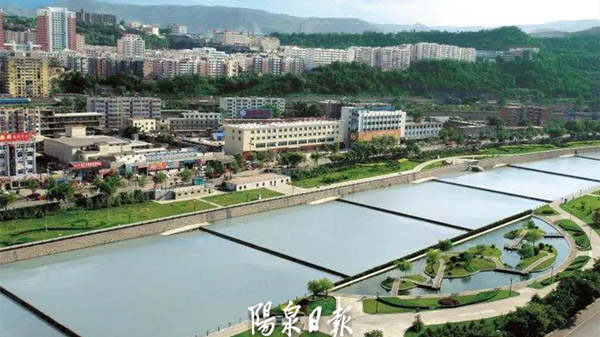Historical revolutionary sites an inspiration ahead of Party's centenary
Tourists and local people flock to learn of hard-won victories of the past 100 years
As the 100th anniversary of the Communist Party of China (CPC) approaches, enthusiasm for learning the history of the CPC is growing among residents of North China's Shanxi province.
In Shanxi, residents are keen on studying the CPC's history as they hope to draw inspiration from the Party's development over the past century and pass down the revolutionary DNA of the Party to future generations, said Zhao Qi, an official at the Shanxi Committee of the CPC.
"When we are admiring the Red -- or revolutionary -- spirit in such famous places, like Jiaxing, Jinggangshan and Yan'an, we should be proud of the fact that Shanxi is never short of its revolutionary sites," Zhao said.
She made the remarks during a seminar held in Taiyuan, the capital city of Shanxi, on March 18, for the study of the Party's history.
Jiaxing in Zhejiang province is the city where the CPC was founded on July 1, 1921; Jinggangshan, a mountain in the east of Jiangxi province is the place where Mao Zedong created the first military base for the CPC in the 1920s; and Yan'an in the north of Shaanxi province was home to the CPC headquarters from 1935 during the War of Resistance Against Japanese Aggression (1931-45).
The Taihang and Lyuliang mountains in Shanxi are remembered by people throughout China, as these are among the renowned bases for the CPC military forces during the war.
Shanxi's authorities launched the campaign to study Party history on Feb 22.
Lou Yangsheng, Party secretary of Shanxi, hosted the opening ceremony of the campaign on that day, requiring Party members and residents to draw wisdom and strength from the Party's development over a century.
"We should make good use of the 'Red resources' in Shanxi province to make the Party's history better known to our people and use them to guide people's actions," Lou said.
Yangquan city in eastern Shanxi is located at the heart of Taihang Mountains. It used to be an important base for the Communist-led Eighth Route Army during the war.
Nangou village in Jiujie township, Yangquan, used to be one of the important sites for the Hundred Regiments Offensive, a major campaign of the Eighth Route Army divisions commanded by general Peng Dehuai (1898-1974) against the Japanese army in North China in 1940.
In that period, the Eighth Route Army mobilized more than 400,000 soldiers in 115 regiments for an offensive against the Japanese invaders from August to December in 1940.
The Communist forces succeeded in destroying facilities that the Japanese were using for supplying its aggression in China, including railways, highways, bridges, tunnels, coal mines and factories, and attacking Japanese garrisons. About 970 kilometers of railways were destroyed, and the Jingxing coal mine -- which was important to the Japanese war industry -- was rendered inoperable for about six months. The offensive was the greatest victory of the Eighth Route Army during the war.
The Langyu Valley near Nangou village was a major battlefield during the Hundred Regiments Offensive. A museum and a memorial have been built on the site to remember the heroism, courage and dedication of the Eighth Route Army soldiers.
The local people are quite familiar with the history and stories of the battles. When tourists come, they are pleased to be their guides, showing them the battlefield sites and telling them stories that took place eight decades ago.
Yan Runhong, Party secretary of Nangou village, said the Red tourism resources, including the battle sites, museum and historical stories are the "most vivid materials" for the study of the Party's history.
"We are happy to welcome more and more visitors to our village, which shows people's increasing enthusiasm in learning the Party's history," Yan said.
The village official said the Red tourism resources are the most precious asset for villagers and tourists alike.
"On one hand, our villagers get increasing revenues from the growing number of visitors," Yan said. "On the other, Red tourism is also a kind of spiritual wealth that makes people cherish the hard-won peace and increases their sense of pride in building a better world."
Guo Yanjie contributed to this story.

Calligraphers in Taiyuan express their best wishes for the 100th anniversary of the founding of the Communist Party of China. SHI XIAOBO/FOR CHINA DAILY

University students in the city of Jinzhong visit an exhibition on the Party's history. ZHANG QIAN/FOR CHINA DAILY





